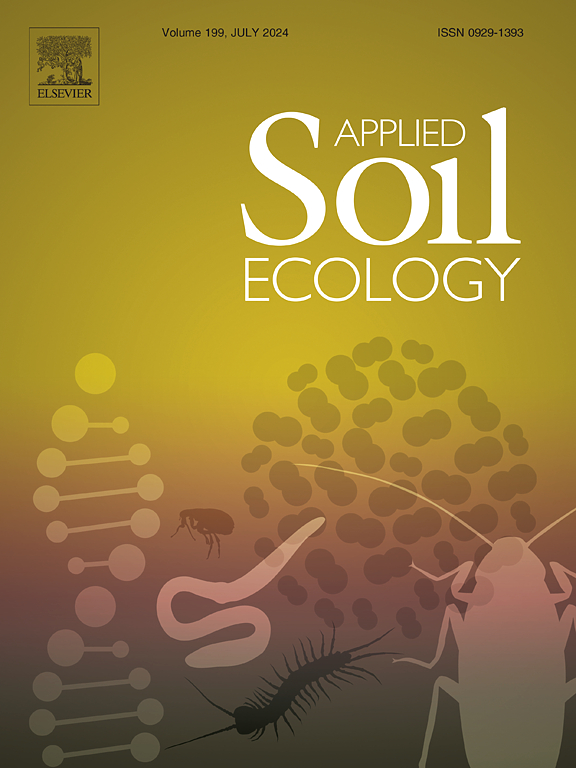Angelica cultivation and mycorrhizal inoculation improve microbial diversity, functions and network complexity of trace elements-polluted soil: A three-year field study
IF 4.8
2区 农林科学
Q1 SOIL SCIENCE
引用次数: 0
Abstract
Growing aromatic and medicinal plants for producing essential oils has been presented as an innovative and economically viable alternative for phytomanaging soils polluted by trace elements (TE). However, the influence of aromatic plants, particularly angelica cultivation, on the soil microbial communities has received little attention. Thus, this work is aimed at studying changes in the biomass, composition, functional diversity, and network complexity of soil bacterial and fungal communities during three years of cultivation. Although growing angelica had little effect on fungal richness and diversity, the biomass and diversity of bacterial communities increased, as did the complexity of interactions between various microorganisms in the polluted soil compared to the initial state. Saprotrophic fungi became significantly more abundant after angelica cultivation, contributing to increased soil organic carbon and organic matter content. Arbuscular mycorrhizal fungi inoculation enhanced microbial network complexity from the year 2. Finally, an improvement in the abundance of functional genes linked to the carbon cycle was demonstrated. The findings evidenced the ecological requalification of TE-polluted soil thanks to the angelica cultivation.
求助全文
约1分钟内获得全文
求助全文
来源期刊

Applied Soil Ecology
农林科学-土壤科学
CiteScore
9.70
自引率
4.20%
发文量
363
审稿时长
5.3 months
期刊介绍:
Applied Soil Ecology addresses the role of soil organisms and their interactions in relation to: sustainability and productivity, nutrient cycling and other soil processes, the maintenance of soil functions, the impact of human activities on soil ecosystems and bio(techno)logical control of soil-inhabiting pests, diseases and weeds.
 求助内容:
求助内容: 应助结果提醒方式:
应助结果提醒方式:


